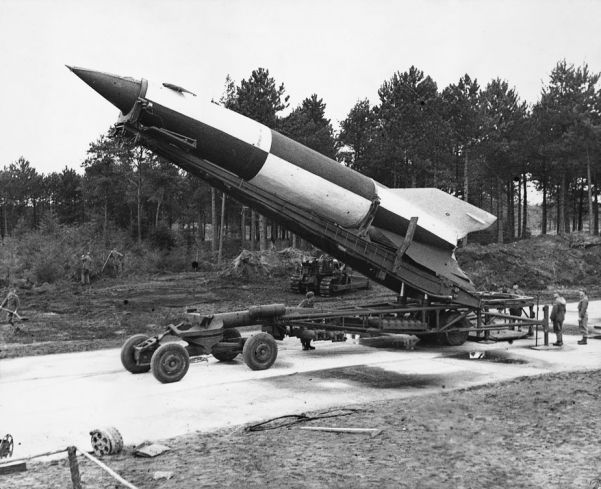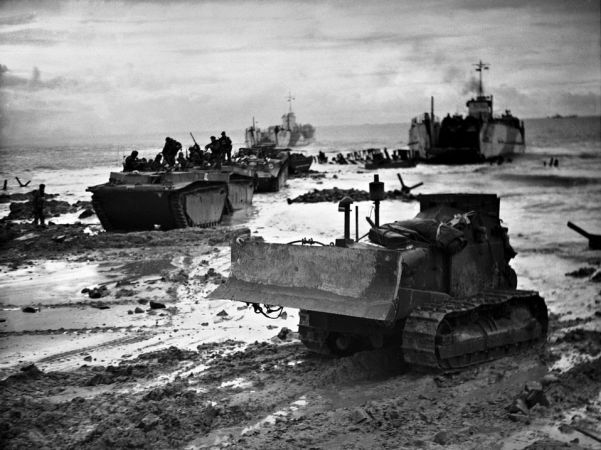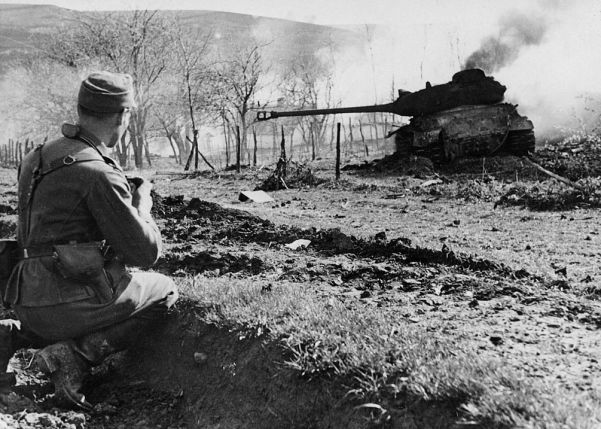2 October
Eastern Front, Poland
After a bitter two-month battle, the last Poles in Warsaw surrender. The Germans evacuate the entire remaining population and begin the systematic destruction of anything left standing. Polish deaths number 150,000, while the German commander, SS General Erich von dem Bach-Zelewski, claims he has lost 26,000 men.
3 October
Air War, Britain

The German bombardment of Britain with V2 long-range heavy rockets has resumed from new launch sites dotted across Holland.
4 October
Mediterranean, Greece
Determined to prevent a communist takeover in Greece, Winston Churchill launches Operation Manna. British troops land at Patrai in the Peloponnese as German forces pull back.
9 October
Western Front, Belgium

Although the Allies captured Antwerp on September 4, they have not been able to use the great port because there are German units on both sides of the Scheldt estuary. Therefore, the Canadian First Army commences operations to eradicate the enemy presence in this area.
Pacific, Iwo Jima
Admiral Chester W. Nimitz, commander of all Allied forces in the Central Pacific, informs Lieutenant General Holland M. ‘Howling Mad’ Smith, one of the leading exponents of amphibious warfare and commander of all US Marines in the Pacific, that the island of Iwo Jima will be his next target and that Smith will lead the invasion with three US Marine divisions. The island is within bombing range of the Japanese mainland.
10-29 October
Eastern Front, Hungary

A massive tank battle rages around Drebrecan between two panzer divisions of Germany’s Army Group Southern Ukraine, commanded by General Johannes Friessneer. The German forces have cut off three Soviet tank corps of Marshal Rodion Malinovsky’s 2nd Ukrainian Front. The Soviets lose many tanks in the initial German attacks, but fresh Soviet units tip the scales against the Germans, who do not have the forces to fight attritional battles. Farther south, the German Army Group E leaves Greece.
11-19 October
Balkans, Yugoslavia
The Red Army joins with the Yugoslavian First Army in the drive to Belgrade, which is abandoned by the Germans on the 19th.
14 October
Politics, Germany
Field Marshal Erwin Rommel commits suicide with poison. Implicated in the July assassination plot against Hitler, he has killed himself, under pressure, to save his family from arrest. He is to be given a state funeral as part of the charade to maintain the illusion that he was an uncompromising Nazi.
20 October
Balkans, Yugoslavia
The 1st Proletarian Division of Marshal Tito’s Army of Liberation captures Belgrade.
Pacific, Philippines
As the US Sixth Army lands on Leyte Island, General Douglas MacArthur wades ashore and keeps a promise he made two years earlier: ‘I shall return.’ By the evening 10,000 US troops are dug in around Leyte’s capital, Tacloban, and Dulag to the south.
21 October
Western Front, Germany
The city of Aachen surrenders to US forces following a 10-day siege.
23-26 October
Pacific, Philippines
Following the US landings on Leyte, the Japanese put in motion their Sho Plan, in which a part of the Combined Fleet is used to decoy the US carrier force while the remainder concentrates against the landing area and attempts to destroy the amphibious armada. The resulting naval battle of Leyte Gulf has four phases: the Battle of the Sibuyan Sea, the Battle of the Surigao Strait, the Battle of Samar, and the Battle of Cape Engano. The result is that the Japanese Combined Fleet is finished as a fighting force, not least because its losses in trained pilots are irreplaceable. It loses 500 aircraft, four carriers, three battleships, six heavy and four light cruisers, 11 destroyers, and a submarine, while every other ship engaged is damaged. US losses are 200 aircraft, one light carrier, two escort carriers, two destroyers, and one destroyer-escort.
31 October
Eastern Front, Baltic
The Soviet 1st Baltic Front isolates the remnants of Army Group North in the Courland Peninsula.
